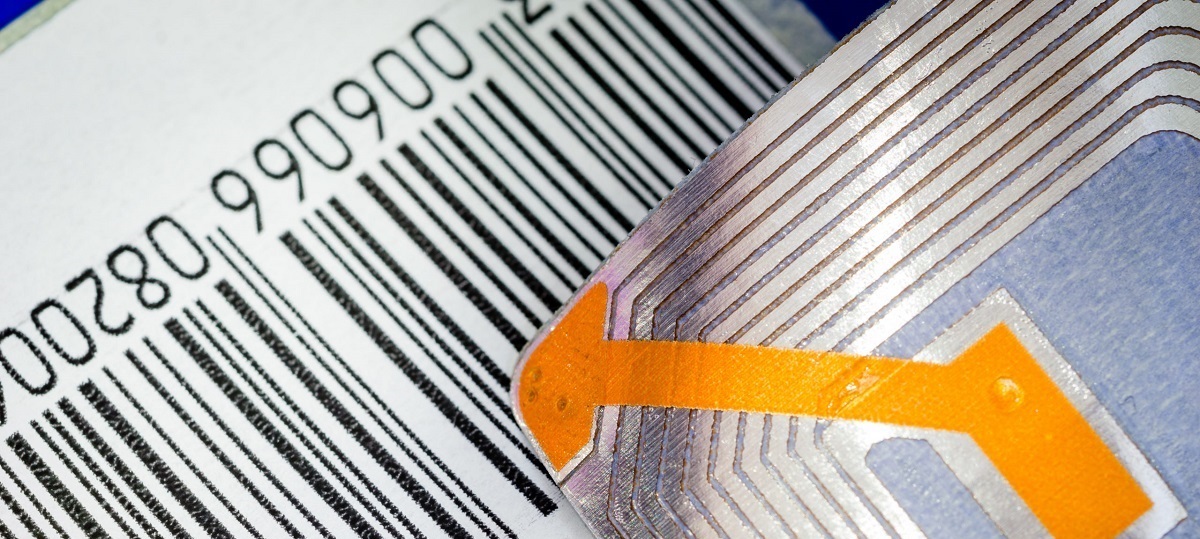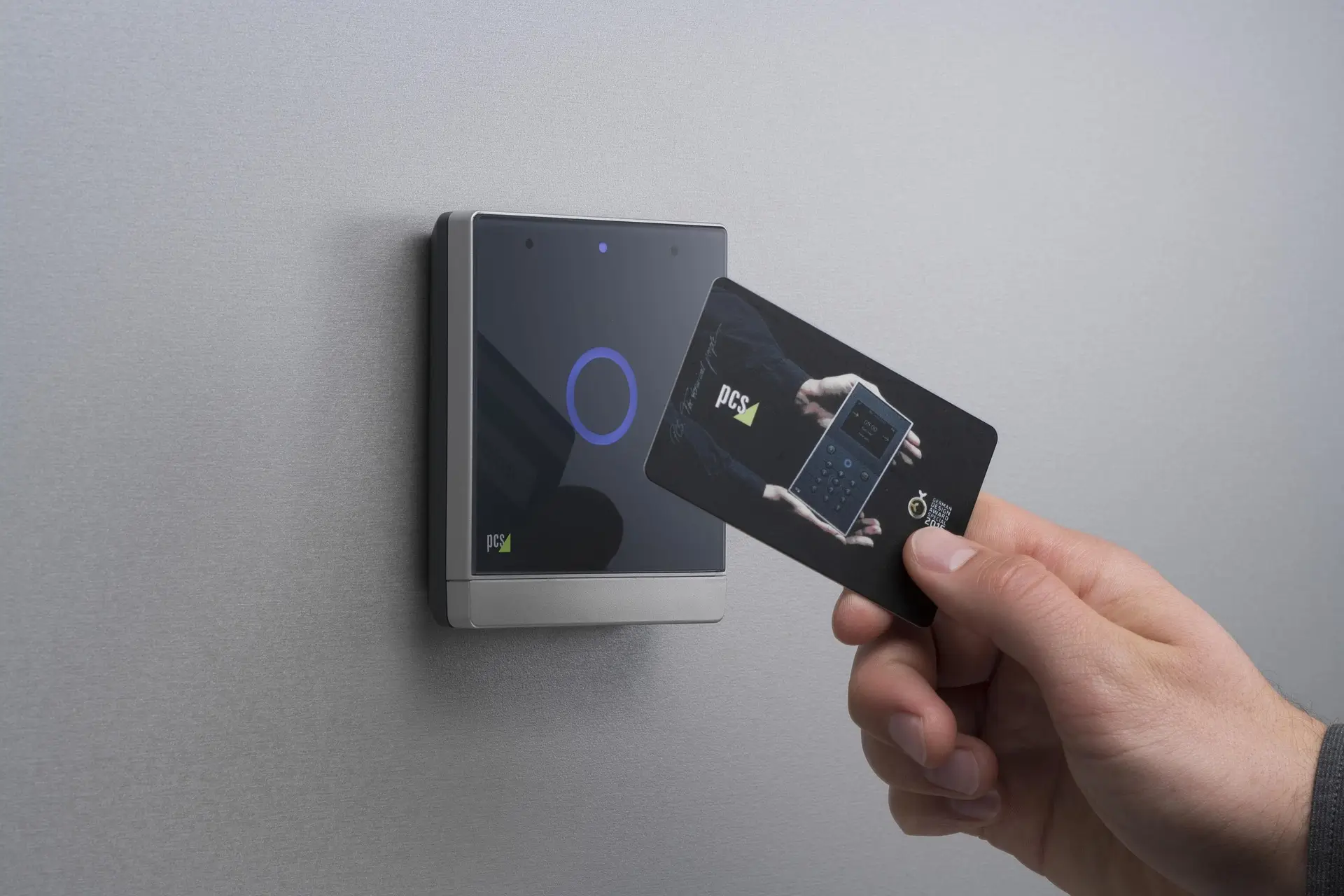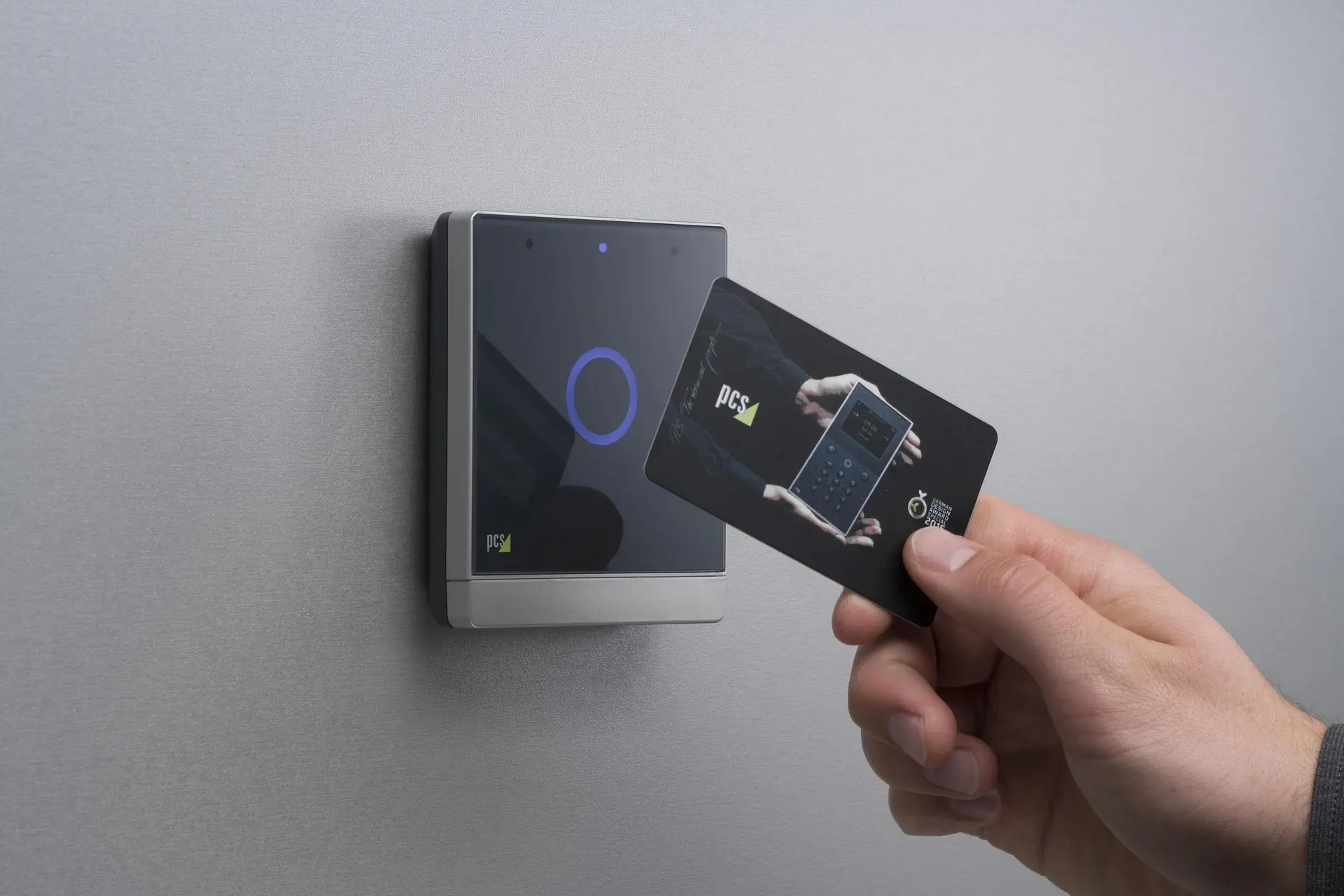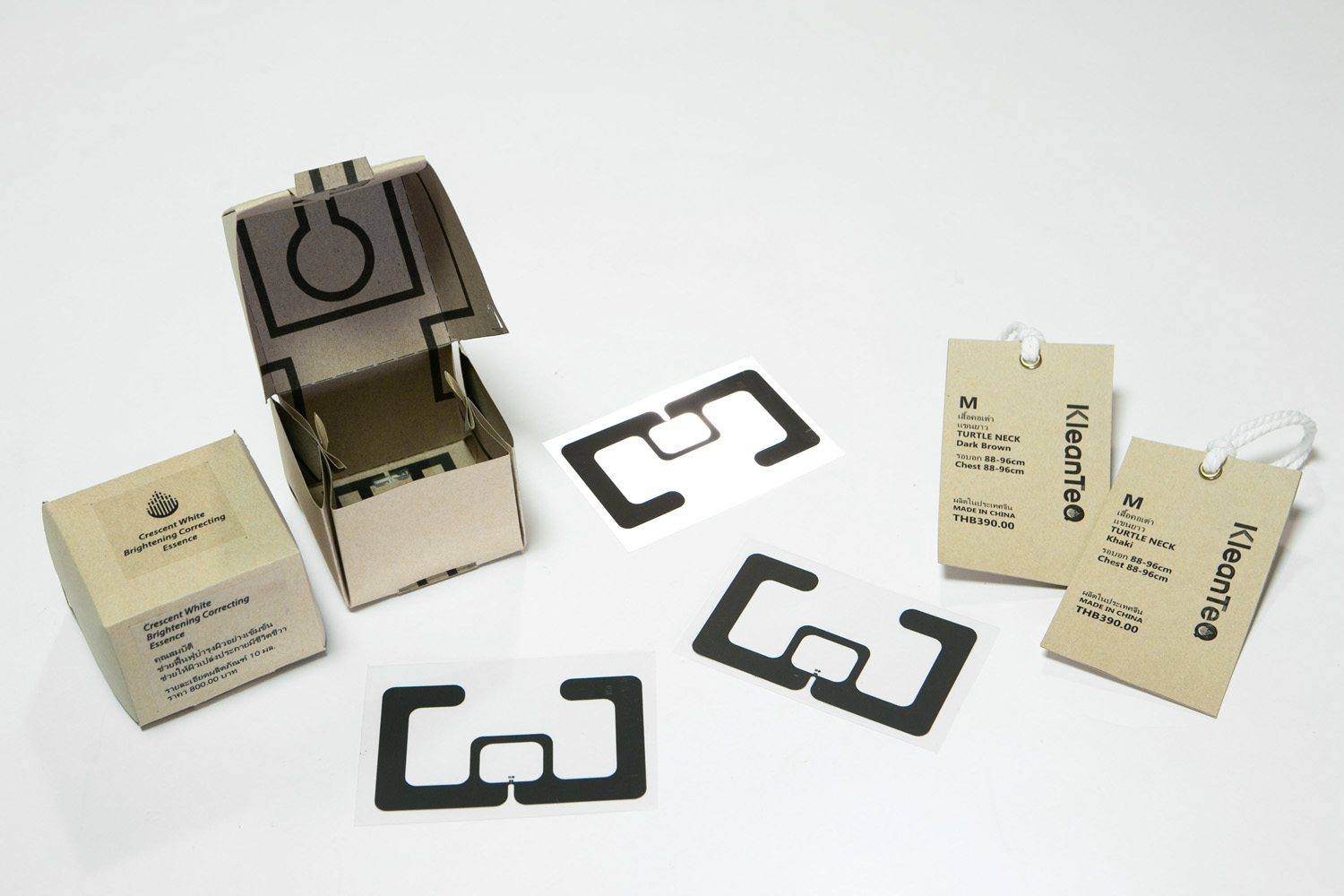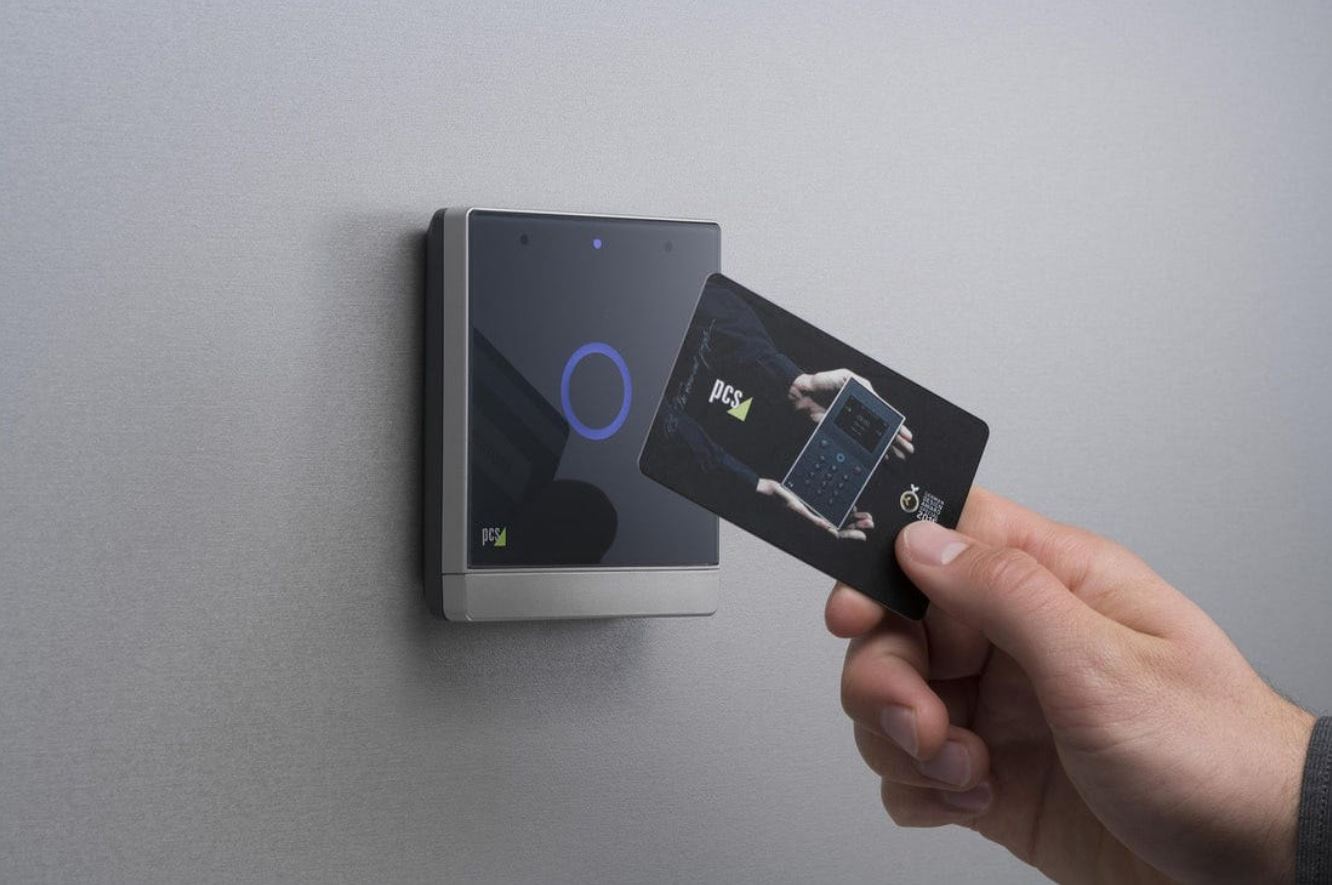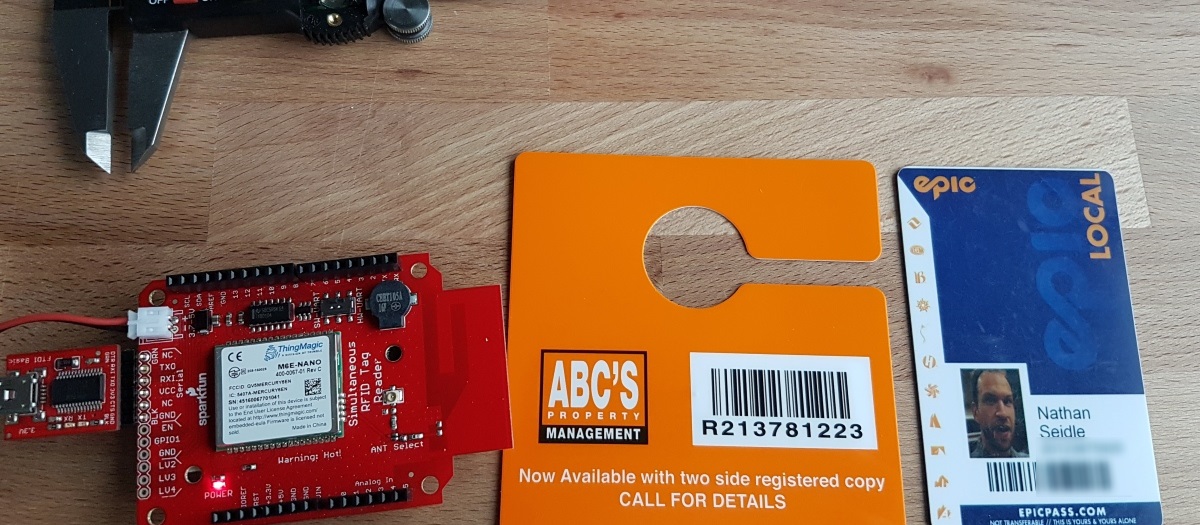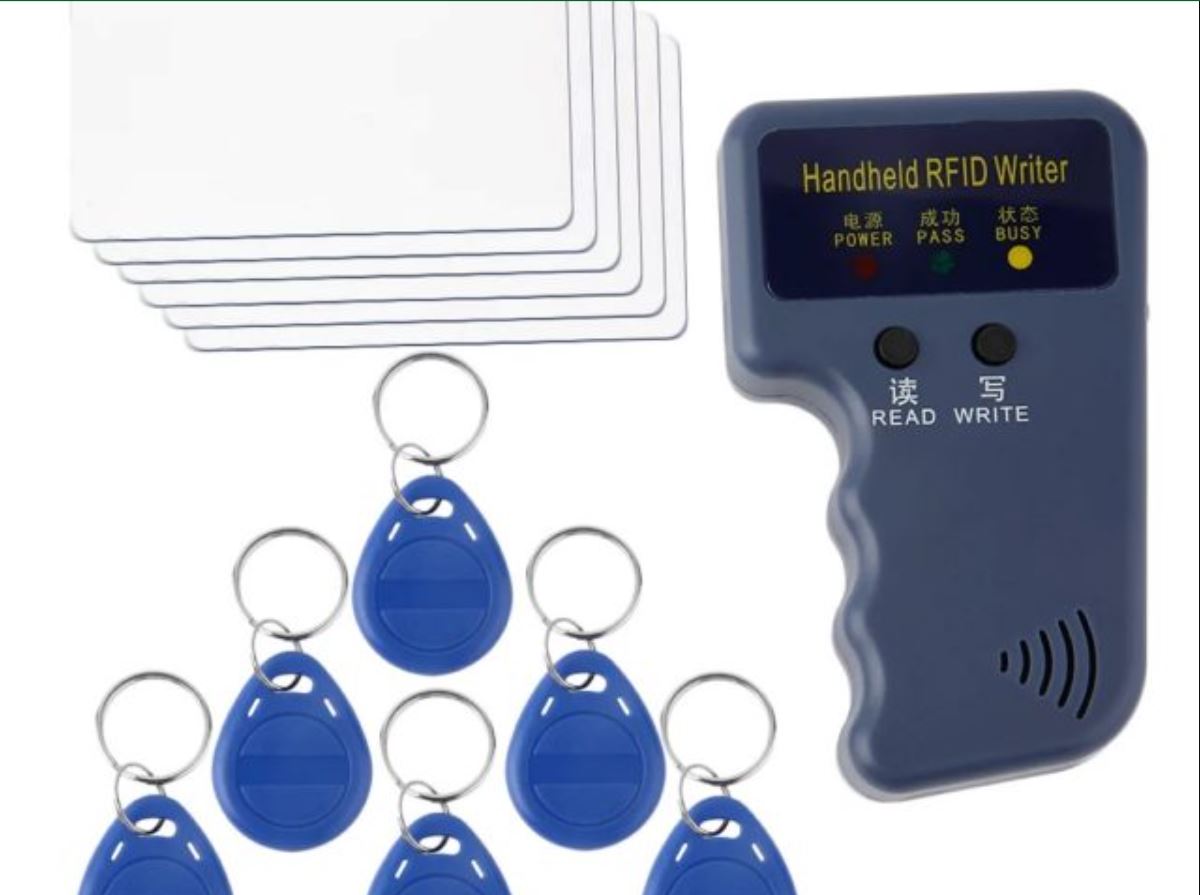Introduction
Welcome to the world of RFID technology! RFID, which stands for Radio Frequency Identification, is a powerful technology that has revolutionized various industries. It has become an essential tool for tracking, identification, and data collection purposes. This article will explore the fascinating uses of RFID tags and their impact on different sectors.
RFID technology utilizes radio waves to transfer data wirelessly between a reader and a tag. These tags, also known as transponders, consist of a microchip that stores unique information and an antenna for communication.
The versatility of RFID has made it a vital component in numerous industries. In the retail sector, RFID tags are used to improve inventory management, enhance customer experiences, and prevent theft. The supply chain industry relies on RFID technology to monitor the movement of goods, reduce errors, and enhance efficiency. Additionally, RFID plays a critical role in access control and security systems, transportation and logistics operations, animal tracking, healthcare and pharmaceuticals, and library management.
As we delve into each sector, you will discover how RFID tags are employed and the benefits they bring. Whether it is streamlining operations, ensuring accurate data capture, or enhancing security, RFID technology has proven its value time and time again.
So, grab a cup of coffee and get ready to explore the exciting world of RFID tags. From retail shelves to hospital wards and beyond, you will soon realize the significant role this small but mighty technology plays in our daily lives.
What is RFID?
Radio Frequency Identification, commonly known as RFID, is a technology that uses radio waves to wirelessly identify and track objects. It consists of two main components – a reader and a tag. The reader emits radio waves that power and communicate with the tags, which contain a microchip and an antenna. When the reader comes into proximity with the tag, it captures the information stored in the tag’s microchip.
RFID technology has several advantages over traditional identification and tracking methods. Unlike barcodes, which require a line of sight to be scanned, RFID tags can be read from a distance and even through materials like plastic or cardboard. This allows for quick and efficient data capture, making it suitable for a wide range of applications.
RFID tags come in different forms, from small adhesive labels to durable and water-resistant tags for industrial use. Each tag contains a unique identification number, which can be associated with specific items or assets. Some tags can also store additional data such as product details, manufacturing dates, or maintenance records.
The use of RFID technology is widespread across various industries. In retail, RFID tags are used to track inventory levels, reduce stockouts, and enhance the overall customer experience. Supply chain management relies on RFID to monitor the movement of goods, improve logistics, and prevent counterfeiting.
In healthcare, RFID tags are utilized to accurately track medical equipment, ensure proper medication administration, and improve patient safety. Libraries use RFID technology to automate the borrowing and returning process, as well as to prevent theft and manage their collections more efficiently.
Overall, RFID technology provides a reliable and efficient way to identify, track, and manage objects. Its wireless operation, versatility, and ability to capture data in real-time make it an incredibly valuable tool for various industries. In the following sections, we will explore in more detail the specific applications and benefits of RFID tags across different sectors.
How do RFID tags work?
RFID tags work based on the principle of using radio waves to exchange information between a reader and a tag wirelessly. The tags consist of a microchip, which stores the data, and an antenna, which enables communication with the reader. Understanding the basic operation of RFID tags can help shed light on their wide range of applications.
When an RFID reader emits radio waves, it creates an electromagnetic field. This field provides the necessary energy to power the RFID tags within its range. The tags are passive, meaning they do not have an internal power source. Instead, they harvest energy from the radio waves emitted by the reader.
Once the tag receives sufficient energy from the reader, it becomes active and sends a response back to the reader. This response contains the unique identification number or other data stored in the microchip of the tag. The reader captures this information and processes it accordingly.
RFID tags operate on different frequency bands, depending on their specific application. Low-frequency (LF) tags generally operate at 125 kHz and are commonly used in access control systems and animal tracking. High-frequency (HF) tags operate at 13.56 MHz and are often found in contactless payment systems and library management. Ultra-high frequency (UHF) tags, operating at frequencies from 860 to 960 MHz, are prevalent in retail, supply chain management, and logistics.
The range at which RFID tags can be read varies depending on several factors, including the frequency used, the power output of the reader, and the environment. LF and HF tags typically have a shorter range, ranging from a few centimeters to a few meters. UHF tags, on the other hand, can be read at longer distances, up to several meters or even tens of meters.
The data stored on RFID tags can be read, written, or locked, depending on the specific tag’s capabilities and the reader’s functionality. This flexibility allows for various applications, such as updating information on the tag, controlling access permissions, and monitoring the status of assets or inventory.
Overall, the operation of RFID tags involves the interplay between the reader’s electromagnetic field and the tag’s ability to harness that energy and respond with the stored data. This seamless and wireless communication makes RFID tags a versatile and powerful tool for identification, tracking, and data collection purposes in a wide range of industries.
Retail Industry
The retail industry has greatly benefited from the implementation of RFID technology. RFID tags are used to improve inventory management, enhance the overall customer experience, and prevent theft.
One of the significant challenges in the retail industry is accurate inventory management. Traditional methods, such as manual counting or barcode scanning, can be time-consuming and prone to errors. RFID tags provide a more efficient and accurate alternative. With RFID technology, retailers can track inventory levels in real-time, automate replenishment processes, and avoid stockouts. This ensures that the right products are available when customers need them, leading to increased customer satisfaction and sales.
RFID tags also enable retailers to enhance the customer experience. By using RFID-enabled fitting rooms, customers can instantly view product information, check availability, and request different sizes or colors. This reduces the time spent searching for items and improves engagement with the brand.
Furthermore, RFID tags help combat theft in the retail industry. By attaching RFID tags to high-value items, retailers can detect and prevent shoplifting. If an item with an active RFID tag is taken out of the store without being properly purchased, the RFID system will raise an alarm, alerting store personnel. This enhances security and reduces shrinkage, ultimately increasing profitability.
Additionally, RFID technology provides valuable insights into customer behavior. By analyzing data collected from the RFID tags, retailers can gain knowledge about customer preferences, popular products, and shopping patterns. This information can be used to optimize store layouts, plan marketing strategies, and personalize the shopping experience.
Overall, RFID technology has revolutionized the retail industry. From automated inventory management to improved customer experiences and increased security, the implementation of RFID tags has become a game-changer for retailers. As this technology continues to advance, we can expect even more innovative applications that will further transform the retail landscape.
Supply Chain Management
The supply chain industry heavily relies on efficient and accurate tracking of goods throughout the entire process, from manufacturing to delivery. RFID technology has significantly improved supply chain management in terms of visibility, efficiency, and inventory accuracy.
With RFID tags, companies can track the movement of goods in real-time. The ability to monitor and locate items at each stage of the supply chain enhances visibility and enables proactive decision-making. This helps in identifying bottlenecks, optimizing routes, and reducing delays, ultimately improving overall supply chain efficiency.
RFID tags also play a crucial role in reducing inventory errors. Traditional methods, such as manual counting or barcode scanning, can be time-consuming and prone to mistakes. RFID technology automates the inventory management process, capturing data accurately and quickly. This results in reduced stock discrepancies, better demand forecasting, and improved inventory turnover.
Furthermore, RFID enables traceability throughout the supply chain. For industries with strict regulations, such as pharmaceuticals or food, RFID tags can be used to track and monitor items from production to distribution. This ensures compliance with safety standards and provides transparency in the supply chain, improving quality control and reducing the risk of counterfeiting or tampering.
In addition to inventory management and traceability, RFID technology also facilitates effective warehouse management. By attaching RFID tags to pallets or individual items, warehouse operators can easily locate and track inventory within large warehouse facilities. This enhances efficiency in picking, packing, and shipping processes, reducing errors and improving overall productivity.
Another benefit of RFID in supply chain management is its impact on reducing costs and waste. By optimizing inventory management and streamlining operations, companies can minimize excess inventory, prevent stockouts, and reduce the need for emergency shipments. This results in significant cost savings and a more sustainable supply chain.
Overall, RFID technology has revolutionized supply chain management by providing real-time visibility, improving inventory accuracy, ensuring traceability, and optimizing warehouse operations. As the technology continues to evolve, its impact on supply chain efficiency and effectiveness is expected to grow, further transforming the way goods are managed and delivered.
Inventory Management
Inventory management is a critical aspect of business operations, and RFID technology has greatly enhanced this process by providing accurate, real-time data and improving efficiency.
One of the key benefits of RFID in inventory management is the ability to track and monitor stock levels in real-time. With RFID tags attached to items, businesses can capture data on inventory counts swiftly and accurately. This eliminates the need for manual counting or barcode scanning, saving time and reducing errors. Real-time visibility into inventory levels enables companies to make informed decisions regarding stock replenishment, preventing stockouts or overstock situations.
RFID technology also enables businesses to conduct cycle counts more efficiently. Instead of shutting down operations and manually counting inventory, RFID readers can quickly scan RFID tags, providing accurate inventory information without disrupting normal business activities. This improves productivity and minimizes inventory discrepancies.
In addition to accurate stock counts, RFID tags also enable businesses to locate and track inventory items more effectively. With a RFID reader, employees can quickly find misplaced items, reducing search times and minimizing disruptions. This not only saves time but also improves overall operational efficiency.
Another advantage of RFID technology in inventory management is its ability to support automated replenishment systems. By integrating RFID data with inventory control software, businesses can establish automated reorder points based on real-time inventory levels. When stock levels reach a predetermined threshold, the system can trigger automatic reorder processes, ensuring that inventory is replenished in a timely manner.
RFID also facilitates better management of serialized or high-value items. By associating unique identification numbers stored on RFID tags with specific items, businesses can track each item’s movement and status in real-time. This is particularly valuable for industries such as electronics or pharmaceuticals, where tracking individual items throughout the supply chain is crucial for traceability and quality control.
Overall, RFID technology has significantly improved inventory management by providing accurate, real-time data, automating processes, and enhancing efficiency. With RFID tags and readers, businesses can achieve better inventory visibility, reduce errors, optimize stock levels, and streamline operational workflows.
Access Control and Security
RFID technology has revolutionized access control and security systems, providing a more efficient, secure, and convenient method for verifying identities and controlling access to various facilities or sensitive areas.
Traditionally, access control systems relied on physical keys, ID cards, or passwords. However, these methods are susceptible to unauthorized access, lost or stolen cards, and the inconvenience of managing multiple credentials. RFID tags offer a more robust and seamless solution, enabling hands-free and contactless access control.
With RFID-based access control systems, individuals can be issued RFID cards or key fobs containing embedded RFID tags. These tags can be read by RFID readers installed at entry points or access gates. When an authorized person approaches the reader, the system recognizes and verifies the RFID tag’s unique identifier, granting or denying access based on the pre-defined access permissions.
One of the key advantages of RFID-based access control is its speed and convenience. Users can simply wave their RFID cards or key fobs near the reader, eliminating the need to insert keys or swipe cards. This not only saves time but also improves the overall user experience.
Moreover, RFID technology enhances security by reducing the risk of unauthorized access. Since RFID tags have unique identifiers that are difficult to duplicate or clone, it is more secure than traditional access methods. Additionally, access permissions can be easily managed and modified in the system, allowing administrators to grant or revoke access as needed in real-time.
RFID-based access control systems are also suitable for high-security environments. Biometric data, such as fingerprints or iris scans, can be combined with RFID technology to provide multi-factor authentication, further ensuring the identity of the person accessing the restricted area.
In addition to controlling access to physical spaces, RFID technology can be used for asset tracking and security in various industries. By attaching RFID tags to assets or equipment, businesses can monitor their whereabouts, prevent theft, and recover lost or misplaced items more easily.
Overall, RFID technology has transformed access control and security systems, offering a more efficient, secure, and convenient method for managing access to facilities and safeguarding valuable assets. Its ability to provide quick and accurate identification, seamless integration, and flexibility makes it an ideal solution for various access control applications.
Transportation and Logistics
RFID technology has had a profound impact on transportation and logistics, revolutionizing the way goods are tracked, monitored, and managed throughout the supply chain.
One of the key benefits of RFID in transportation and logistics is its ability to improve visibility and traceability. By attaching RFID tags to products, packages, or containers, businesses can track their movement in real-time. This enables logistics companies to have a clear and accurate picture of where shipments are at any given time, enhancing supply chain visibility and enabling better planning and coordination.
RFID tags also play a crucial role in streamlining the shipping and receiving processes. With RFID technology, businesses can automate data capture, eliminating the need for manual paperwork or barcode scanning. This speeds up the loading and unloading of goods, reduces errors, and improves overall operational efficiency.
Another advantage of RFID in transportation and logistics is its impact on inventory management and warehouse operations. With RFID-enabled systems, businesses can accurately track and manage inventory in real-time. This helps in preventing stockouts or overstock situations, optimizing order fulfillment, and reducing carrying costs.
RFID technology also enhances security in transportation and logistics. By attaching RFID tags to high-value or sensitive shipments, businesses can track their movement and monitor for any unauthorized or unexpected activities. This helps in preventing theft, reducing the risk of tampering, and ensuring the integrity of the supply chain.
In addition to asset tracking, RFID technology can be used to improve the efficiency of maintenance and repairs in transportation and logistics. By tagging and tracking equipment or vehicles, businesses can schedule preventive maintenance, track maintenance history, and optimize asset utilization.
Moreover, RFID technology enables the implementation of advanced tracking systems for parcels or packages. By attaching RFID tags to individual items, logistics companies can provide customers with real-time tracking information, enhancing transparency and improving the overall customer experience.
Overall, RFID technology has revolutionized transportation and logistics by providing real-time visibility, improving operational efficiency, enhancing security, and enabling better inventory management. As the technology continues to advance, its impact on the transportation and logistics industry is expected to grow, delivering even greater benefits and transforming the way goods are transported and managed.
Animal Tracking
RFID technology has proven to be a valuable tool in animal tracking and monitoring, revolutionizing the way animals are identified, managed, and studied.
One of the key applications of RFID in animal tracking is livestock management. By attaching RFID tags to individual animals, farmers can easily track and identify each animal within their herds. This enables efficient record-keeping, helps in monitoring animal health and behavior, and improves overall herd management.
RFID tags can store essential information about each animal, such as its date of birth, medical history, or lineage. Farmers can access this information by scanning the RFID tags, allowing for accurate record-keeping and streamlined decision-making regarding breeding, health treatments, or sales of livestock.
RFID technology also plays a vital role in wildlife conservation and research. Biologists and researchers can use RFID tags to track and monitor the movements of individual animals in their natural habitats. This provides valuable insights into migration patterns, behavior, and population dynamics, aiding in the study and conservation efforts of endangered species.
RFID tags are also used in pet identification and tracking. By implanting a small RFID tag under the skin of a pet, owners can ensure their pets can be easily identified if lost or stolen. Animal shelters or veterinary clinics can scan the RFID tag to access the owner’s contact information and reunite the pet with its rightful owner. This enhances the chances of a lost pet being returned and reduces the number of animals in shelters.
Furthermore, RFID technology is utilized in animal research studies. Scientists can attach RFID tags to small animals or birds to track their movements and behaviors in controlled environments. This enables researchers to gather data on feeding habits, habitats, mating, and other critical aspects of animal behavior.
Overall, RFID technology has revolutionized animal tracking and monitoring, providing efficient and accurate methods for identification, management, and research. From livestock management to wildlife conservation and pet identification, RFID tags have proven to be a valuable tool in understanding and protecting animal populations.
Healthcare and Pharmaceuticals
RFID technology has had a significant impact on healthcare and pharmaceutical industries, improving patient safety, enhancing medication management, and streamlining operational processes.
One of the critical applications of RFID in healthcare is patient identification. By using RFID wristbands or tags, healthcare facilities can accurately identify patients and match them with their medical records. This reduces the risk of medication errors, enhances patient safety, and improves overall care quality.
RFID tags are also used to track medical equipment and supplies within hospital settings. By attaching RFID tags to equipment such as infusion pumps, defibrillators, or wheelchairs, healthcare providers can easily locate and monitor their availability and usage. This helps in optimizing equipment utilization, reducing costs, and ensuring equipment is properly maintained and serviced.
Pharmaceutical companies utilize RFID technology to track and manage their supply chains, from manufacturing to distribution. By tagging pharmaceutical products, companies can monitor their movement and ensure product integrity, reducing the risk of counterfeit or diverted drugs. RFID tags also facilitate inventory management, allowing for real-time tracking of stock levels and ensuring that medications are properly stocked and available when needed.
In medication management, RFID technology helps in preventing medication errors, enhancing medication adherence, and improving inventory control. By attaching RFID tags to medication containers, nurses or pharmacists can accurately verify medication information and ensure that the right medication is given to the right patient. RFID also allows for automatic medication inventory counting and expiration date tracking, reducing waste and ensuring medication availability.
In addition to patient identification and medication management, RFID technology aids in tracking and monitoring patients during clinical trials or medical procedures. By using RFID tags, hospitals can accurately track patients’ movements, monitor vital signs, and record specific procedures or treatments. This data helps in improving patient care, optimizing workflow, and generating valuable insights for future research or treatment protocols.
Overall, RFID technology has transformed healthcare and pharmaceutical industries by enhancing patient safety, improving medication management, and optimizing operational processes. The ability to accurately track patients, medications, and medical equipment has significantly improved the overall efficiency and quality of care provided. As technology continues to advance, the applications of RFID in healthcare and pharmaceuticals are expected to expand, further revolutionizing the industry.
Library Management
RFID technology has greatly transformed library management systems, revolutionizing the way libraries catalog, locate, and manage their collections. RFID tags have replaced traditional barcodes, allowing for more efficient and accurate library operations.
One of the key benefits of RFID in library management is its ability to streamline the borrowing and returning process. With RFID-enabled systems, library patrons can easily check out and return books by simply placing them on a designated RFID reader or self-service kiosk. This eliminates the need for manual scanning or barcode verification, reducing waiting times and improving overall user experience.
RFID tags also enhance the accuracy of inventory management in libraries. Library staff can conduct inventory checks more quickly and accurately by using handheld RFID scanners to quickly scan shelves and identify missing or misplaced items. This leads to better inventory control, reduces discrepancies, and ensures that library collections are up-to-date.
Additionally, RFID technology allows for improved theft prevention and security in libraries. By attaching RFID tags to library materials, each item can be easily tracked. If an item is taken out of the library without being properly checked out, the RFID system will activate an alarm, alerting library staff. This discourages theft and helps to maintain the integrity of the library’s collections.
RFID tags also improve the efficiency of resource sharing among libraries. Interlibrary loan processes can be expedited with RFID, as the technology enables quick and accurate identification of borrowed materials. This facilitates seamless cooperation and resource sharing across different library networks or consortiums.
Moreover, RFID technology enables libraries to automate various processes, such as sorting and shelving. With RFID tags, library materials can be sorted and organized automatically, reducing the time and effort required by library staff. This allows them to focus on more value-added activities, such as providing assistance to library patrons.
Overall, RFID technology has revolutionized library management, allowing for faster, more accurate, and secure operations. Whether it’s simplifying the borrowing process, improving inventory control, preventing theft, or enhancing resource sharing, RFID has significantly enhanced the efficiency and effectiveness of library services.
Conclusion
RFID technology has transformed various industries, offering innovative solutions for identification, tracking, and data collection. From retail and supply chain management to healthcare and library management, RFID tags have revolutionized the way businesses operate and streamline their processes.
In the retail industry, RFID tags enhance inventory management, improve customer experiences, and prevent theft. Real-time visibility and accurate data capture allow retailers to optimize stock levels, provide personalized shopping experiences, and ensure product availability.
In supply chain management, RFID technology enables real-time tracking, improves efficiency, and enhances inventory accuracy. Companies can monitor the movement of goods, optimize routes, reduce delays, and minimize errors, resulting in a more streamlined and effective supply chain.
In healthcare and pharmaceutical sectors, RFID tags enhance patient safety, improve medication management, and optimize operational processes. Accurate identification, medication tracking, and equipment management ensure better patient care, reduce errors, and enhance inventory control.
In transportation and logistics, RFID technology provides real-time visibility, improves efficiency, and enables better inventory management. The ability to track shipments, optimize routes, and monitor inventory levels enhances supply chain visibility and improves overall operational efficiency.
RFID tags also play a crucial role in animal tracking, facilitating efficient livestock management, wildlife conservation, and pet identification. Real-time tracking and data collection aid in improving herd management, studying animal behavior, and enhancing the well-being and security of animals.
Furthermore, RFID technology has transformed library management, simplifying borrowing processes, improving inventory accuracy, and enhancing security. The automation of tasks, such as sorting and shelving, reduces manual labor and improves the overall efficiency of library operations.
In conclusion, RFID technology has revolutionized numerous industries by providing efficient, accurate, and secure methods for identification, tracking, and data collection. Its impact on inventory management, supply chain visibility, patient safety, and operational efficiency cannot be overstated. As technology continues to advance, RFID tags are expected to play an even more significant role in shaping the future of various sectors, driving innovation, and improving processes across industries.







